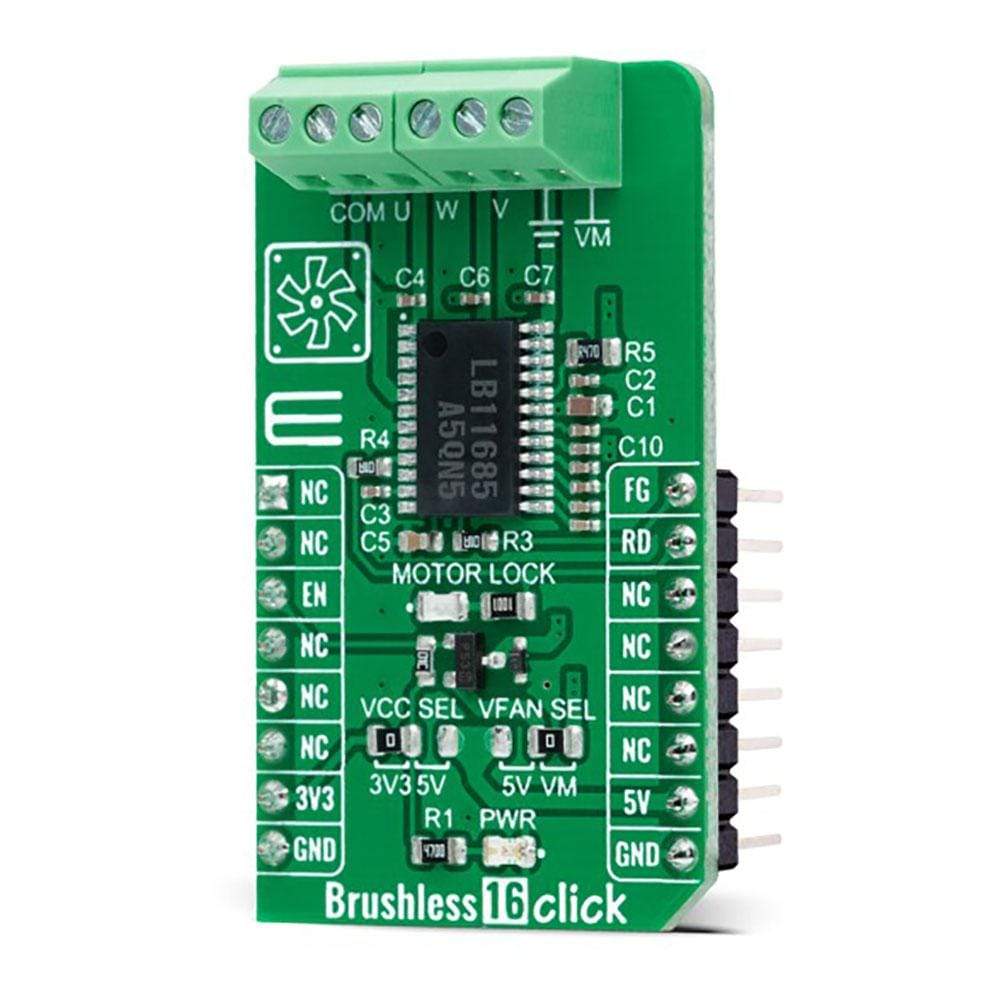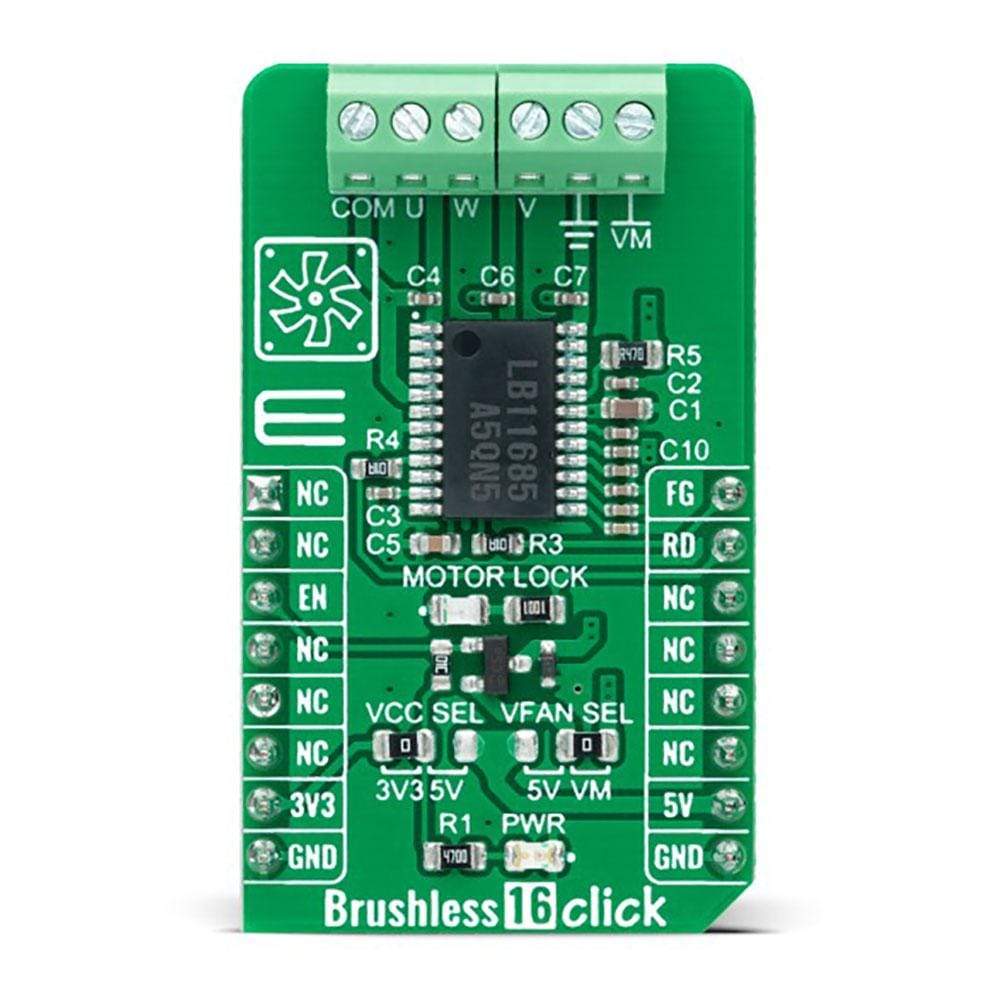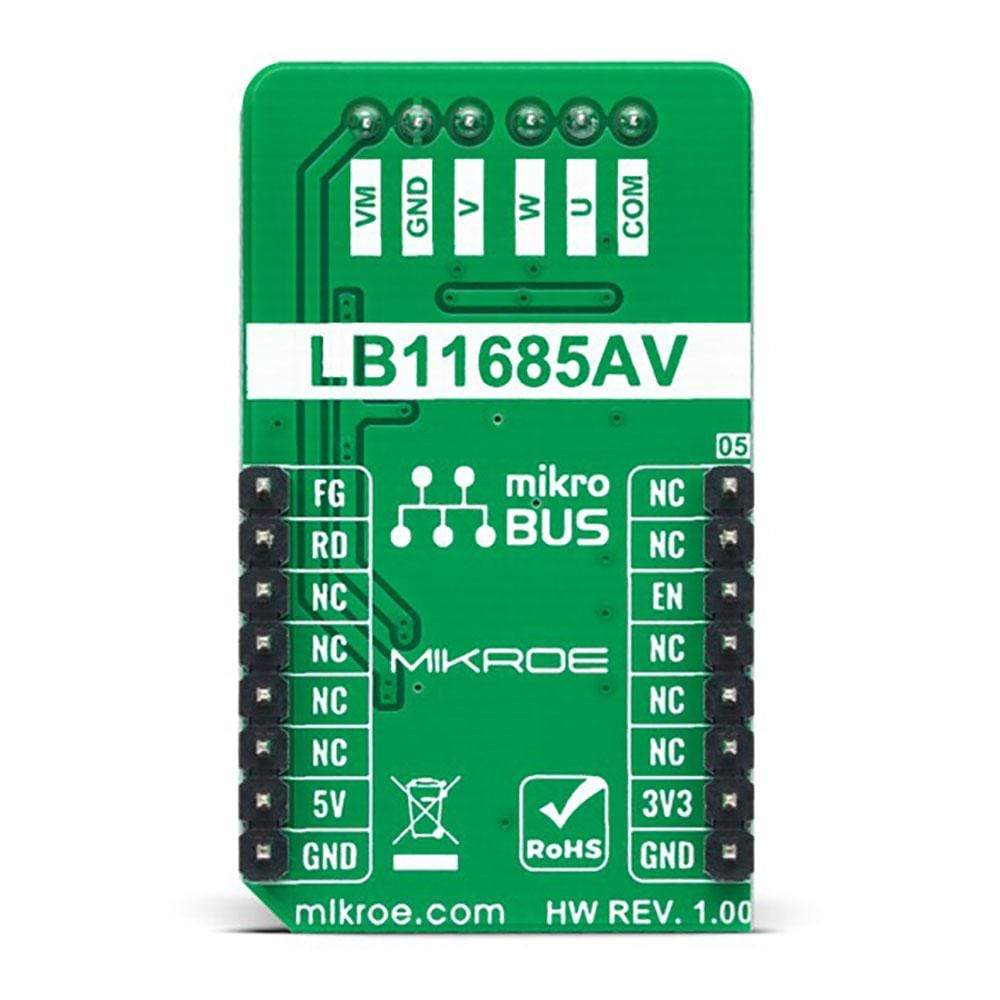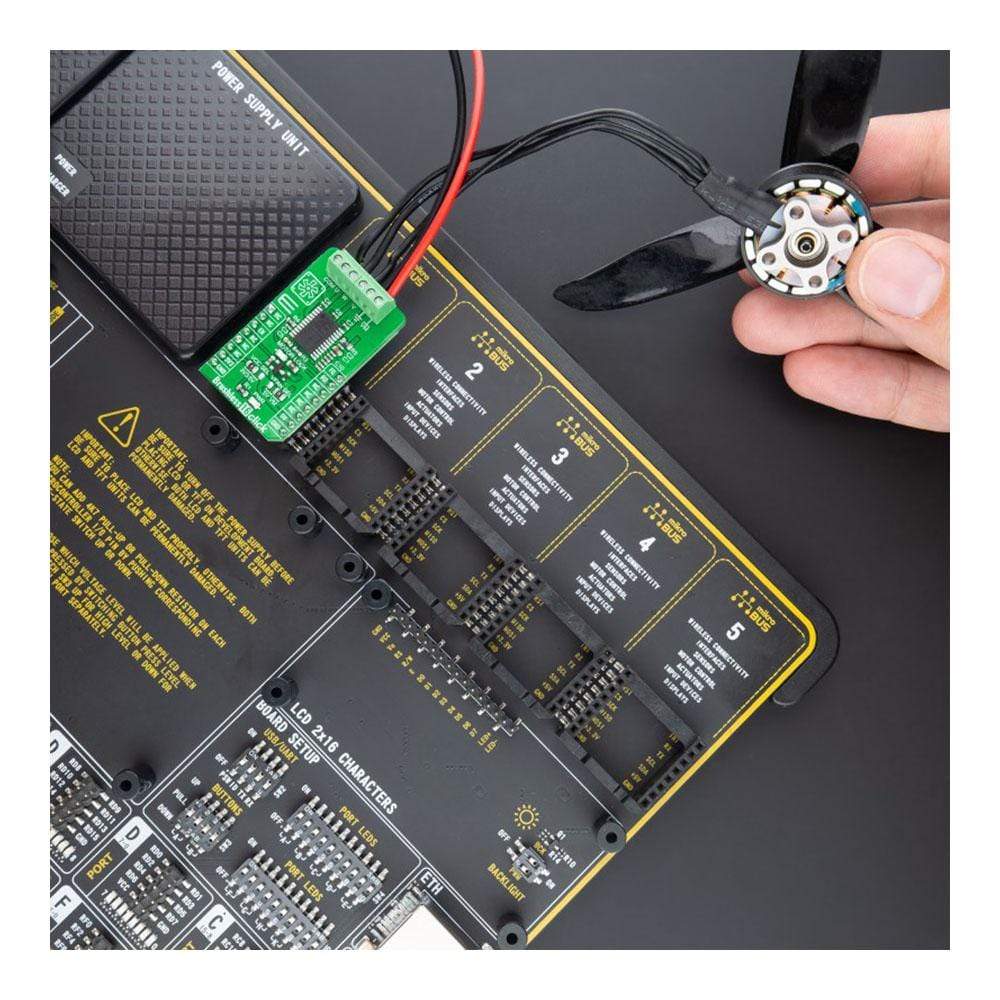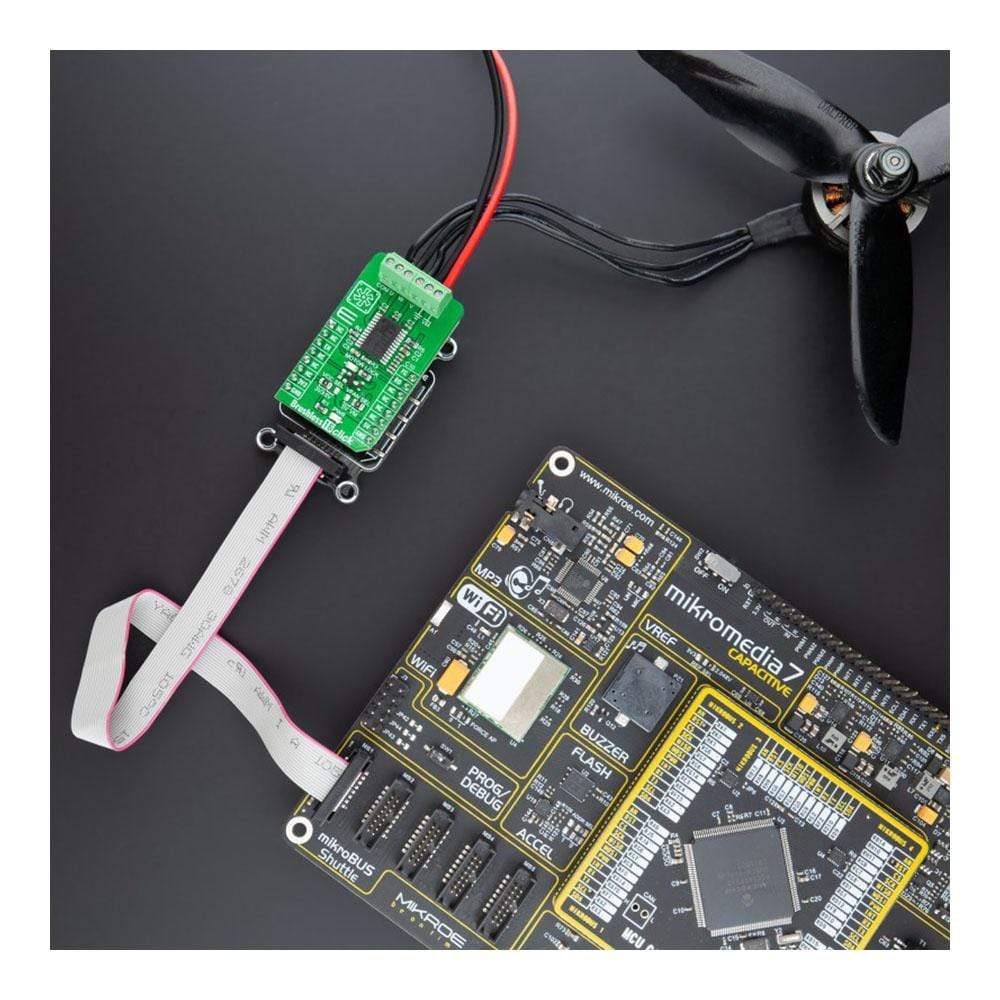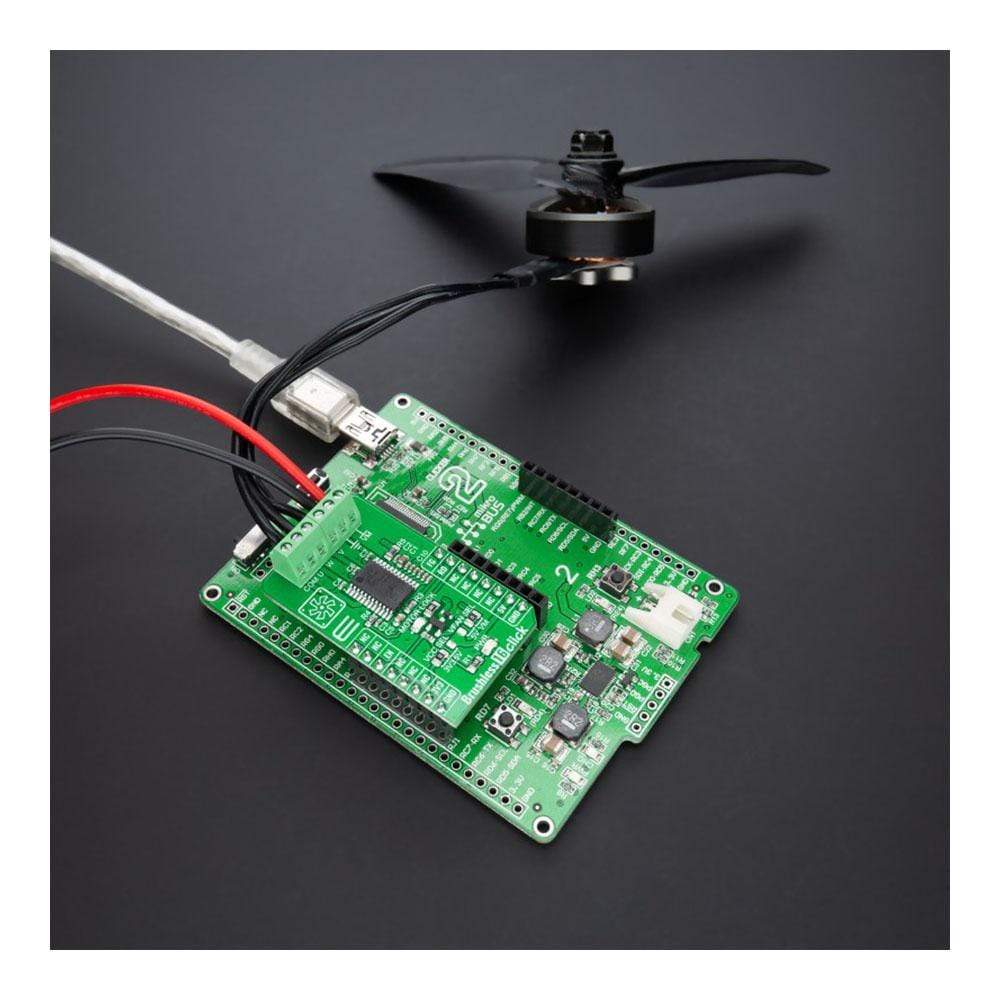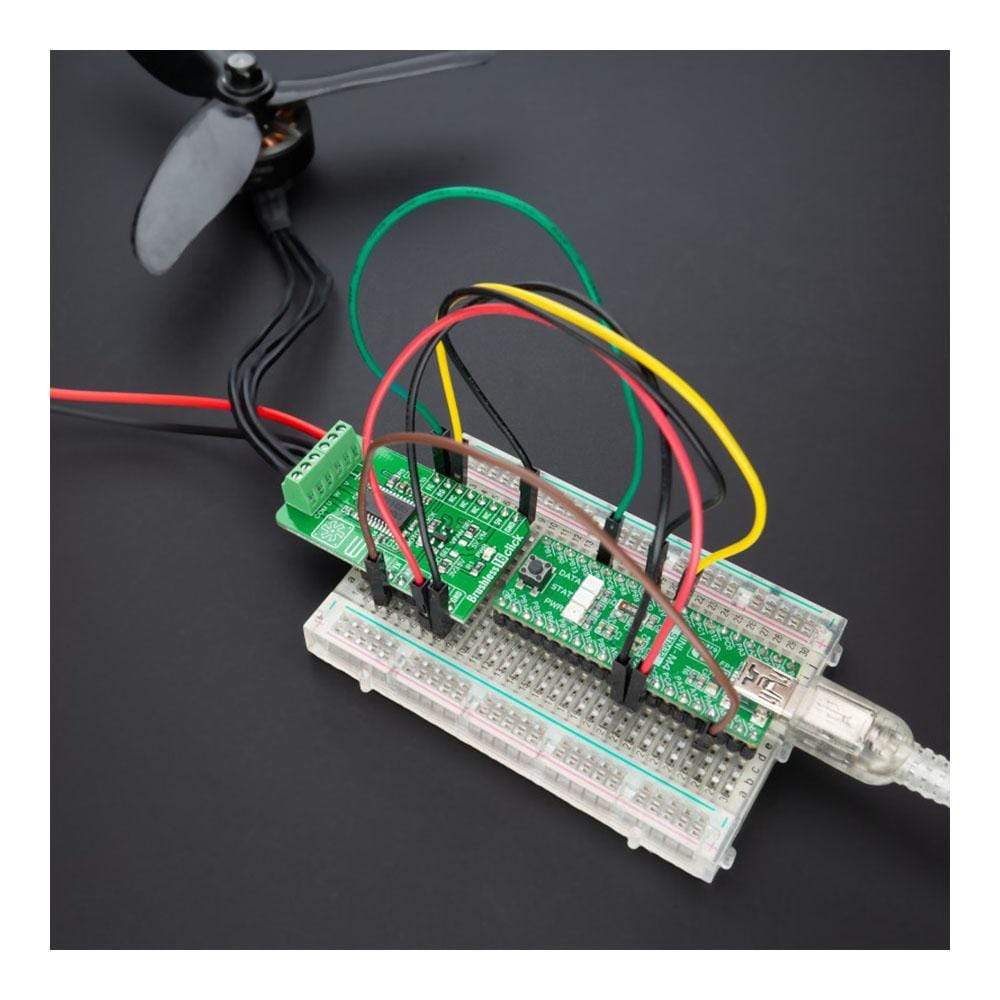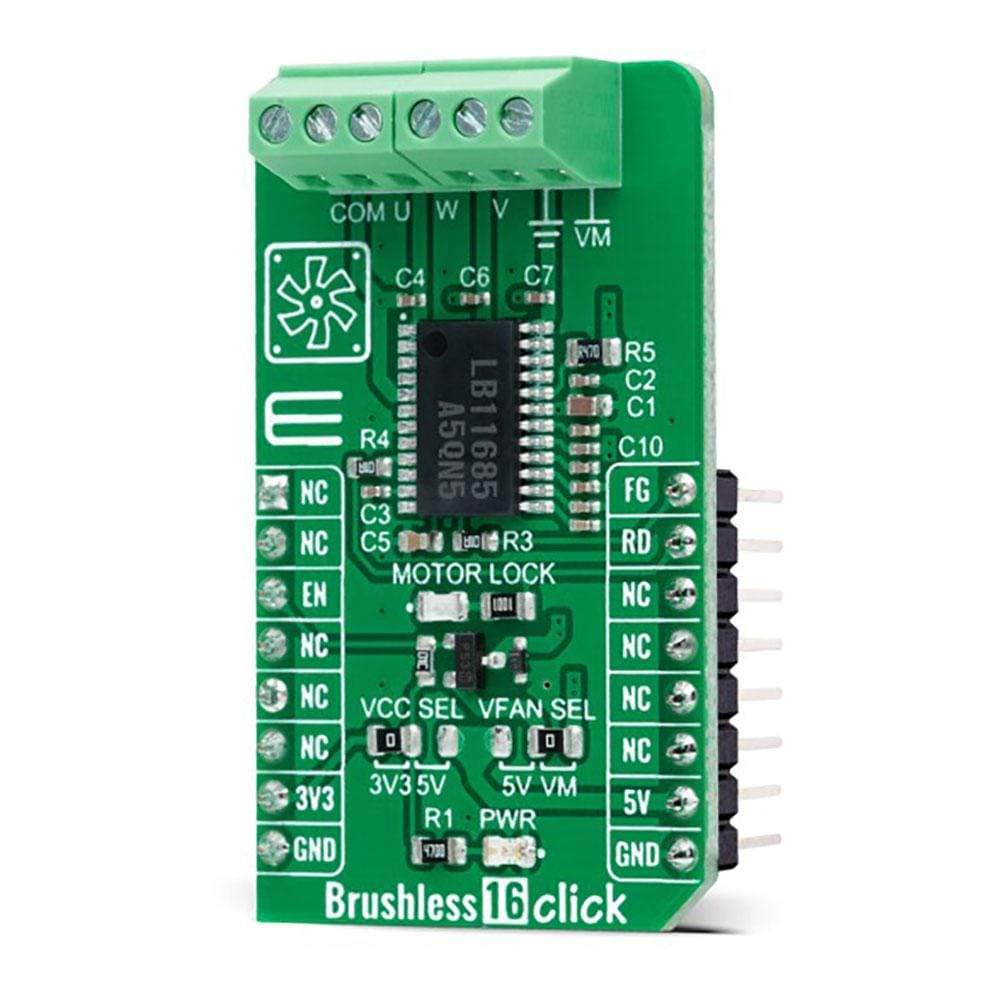
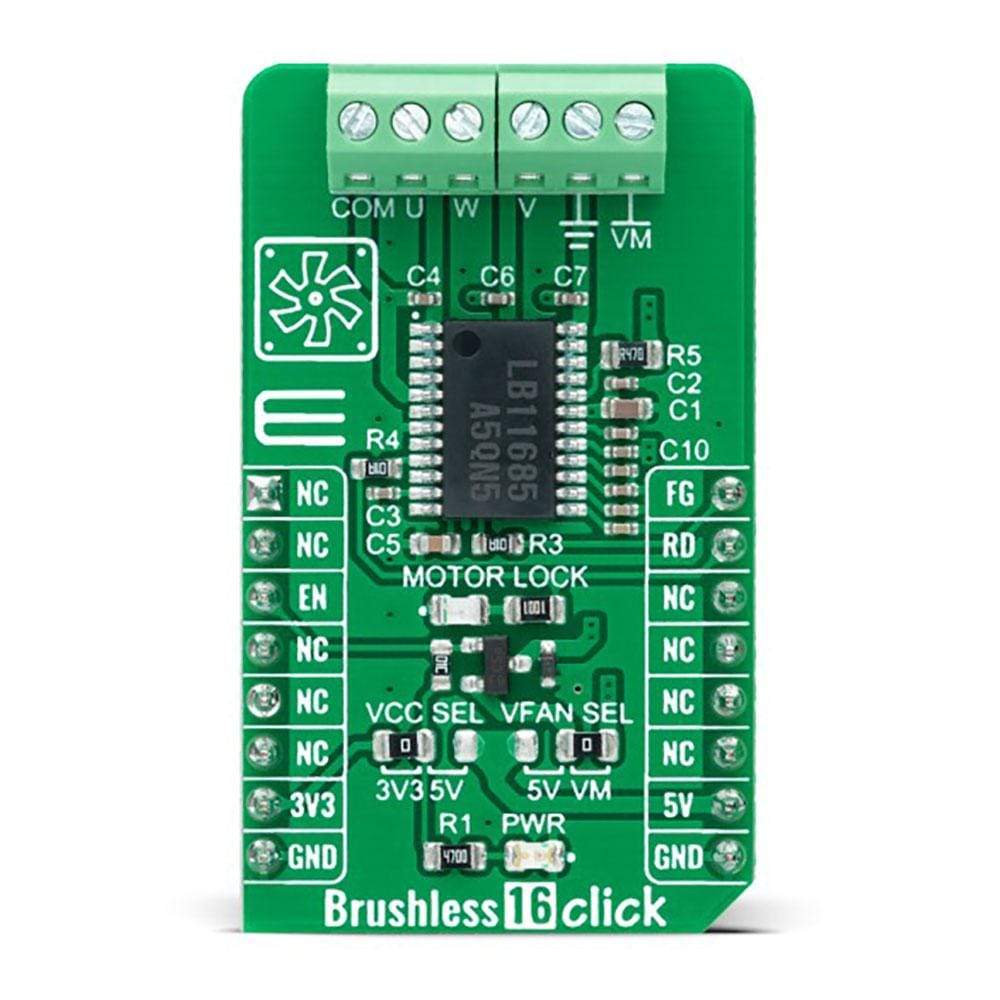
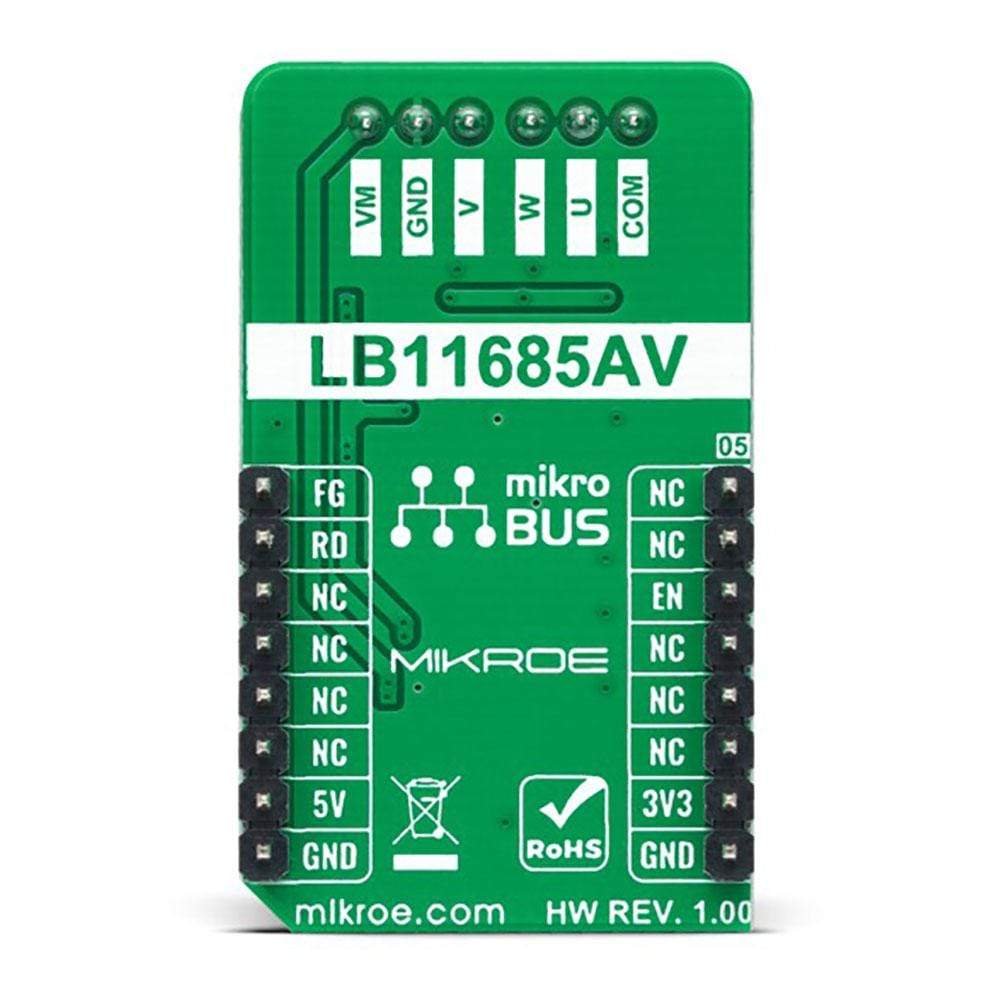

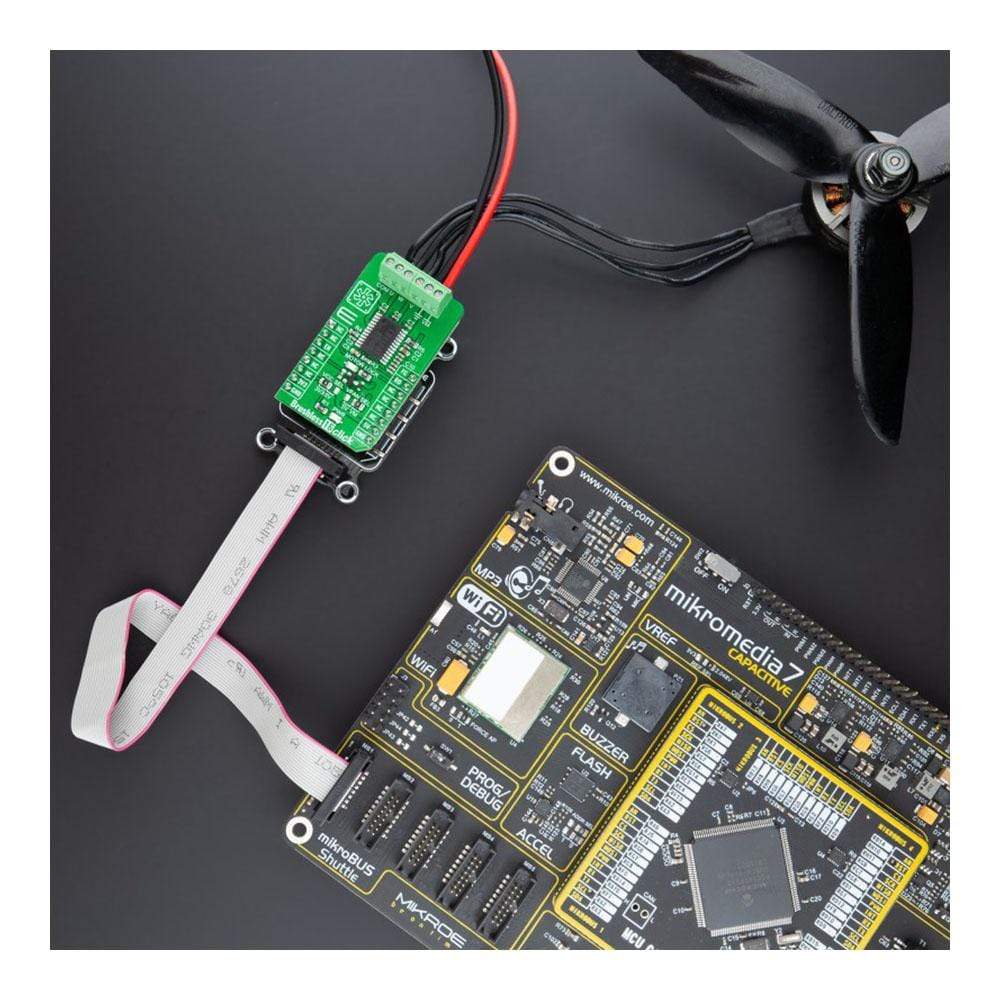
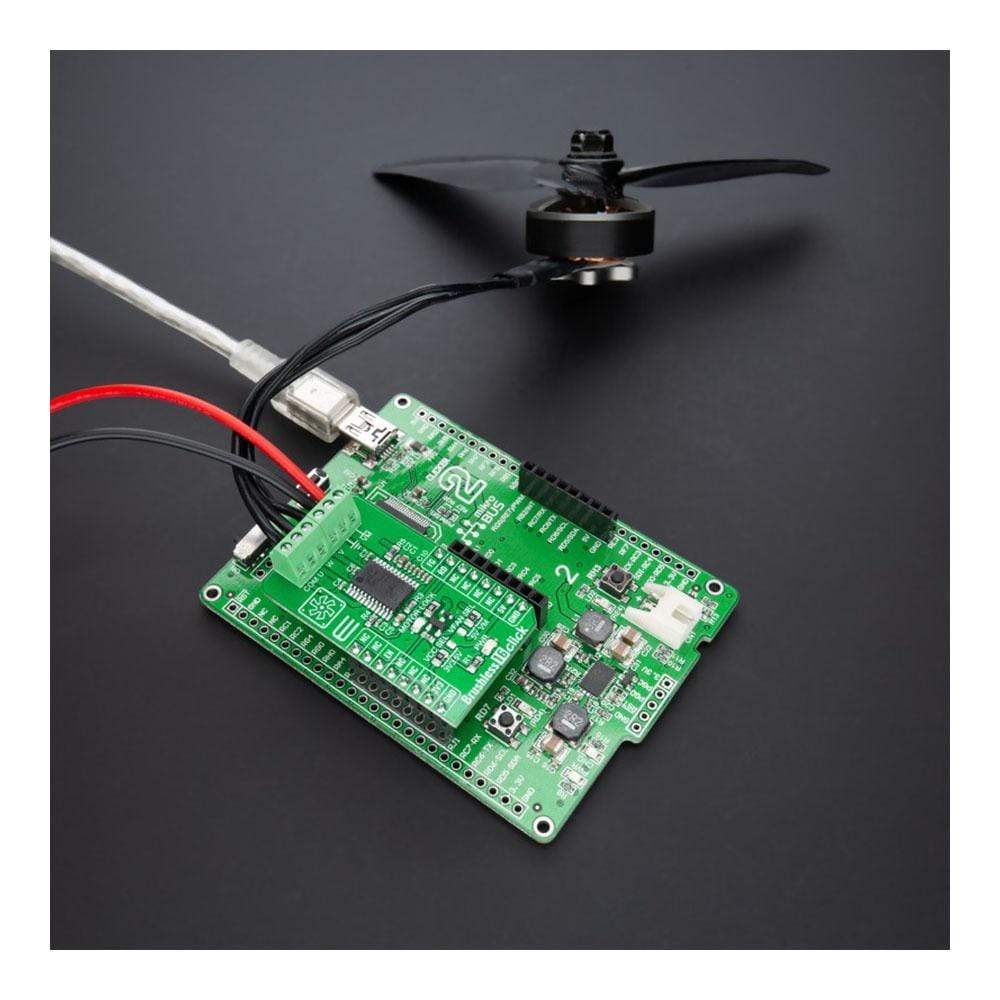
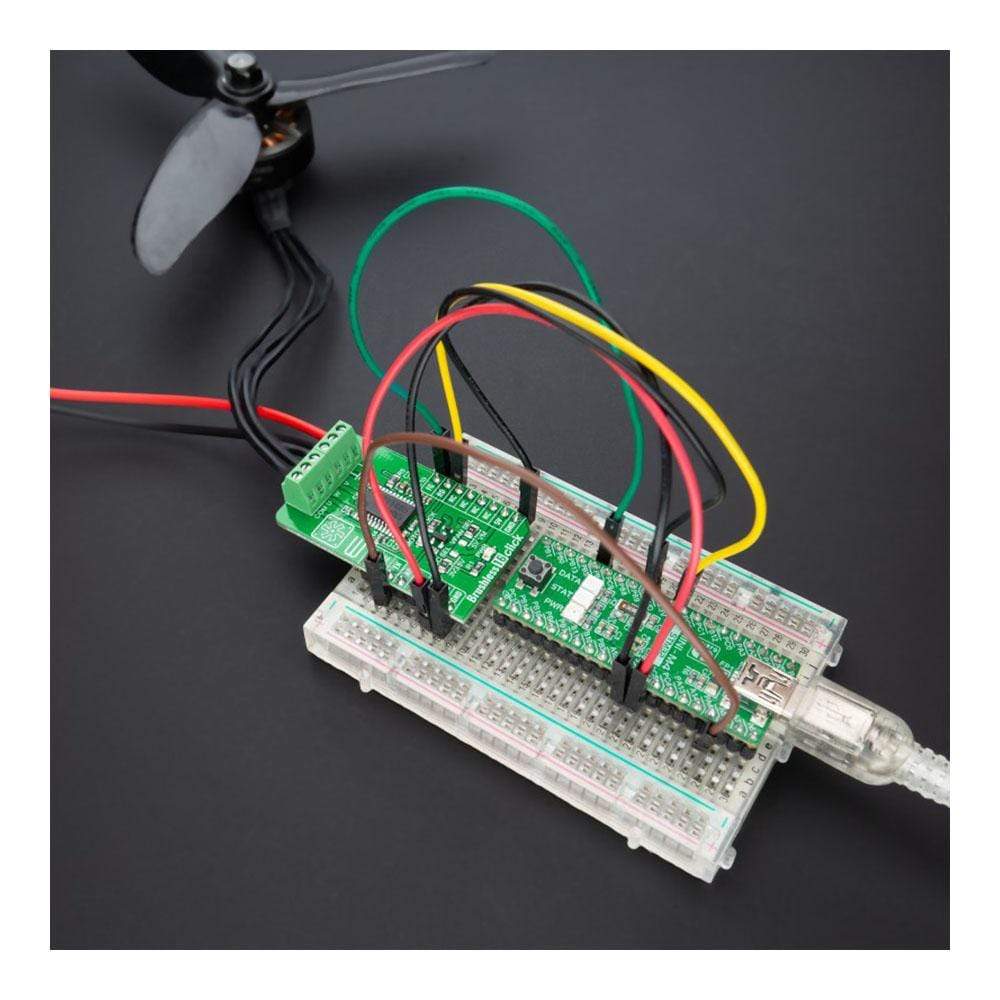
Overview
The Brushless 16 Click Board™ is a compact add-on board suitable for controlling BLDC motors with any MCU. This board features the LB11685AV, a three-phase full-wave current-linear-drive motor driver from ON Semiconductor. It adopts a sensorless control system without the use of a Hall Effect device. The LB11685AV features a current soft switching circuit for quieter operation and is optimal for driving the cooling fan motors used in refrigerators. It also comes with several protection features such as motor lock, thermal shutdown, current limit, beat lock detection, and more.
The Brushless 16 Click Board™ makes the perfect solution for use in home appliances such as air-conditioners and cooling fans, air purifiers, and industrial equipment.
Downloads
Le Carte à clic sans balais 16 Click Board™ est une carte complémentaire compacte adaptée au contrôle des moteurs BLDC avec n'importe quel microcontrôleur. Cette carte comprend le LB11685AV, un pilote de moteur à entraînement linéaire à courant pleine onde triphasé d'ON Semiconductor. Il adopte un système de contrôle sans capteur sans utiliser de dispositif à effet Hall. Le LB11685AV dispose d'un circuit de commutation souple de courant pour un fonctionnement plus silencieux et est optimal pour piloter les moteurs de ventilateur de refroidissement utilisés dans les réfrigérateurs. Il est également doté de plusieurs fonctions de protection telles que le verrouillage du moteur, l'arrêt thermique, la limite de courant, la détection de verrouillage de battement, etc.
Le Brushless 16 Click Board™ constitue la solution idéale pour une utilisation dans les appareils électroménagers tels que les climatiseurs et les ventilateurs de refroidissement, les purificateurs d'air et les équipements industriels.
| General Information | |
|---|---|
Part Number (SKU) |
MIKROE-4742
|
Manufacturer |
|
| Physical and Mechanical | |
Weight |
0.02 kg
|
| Other | |
Country of Origin |
|
HS Code Customs Tariff code
|
|
EAN |
8606027383359
|
Warranty |
|
Frequently Asked Questions
Have a Question?
Be the first to ask a question about this.

